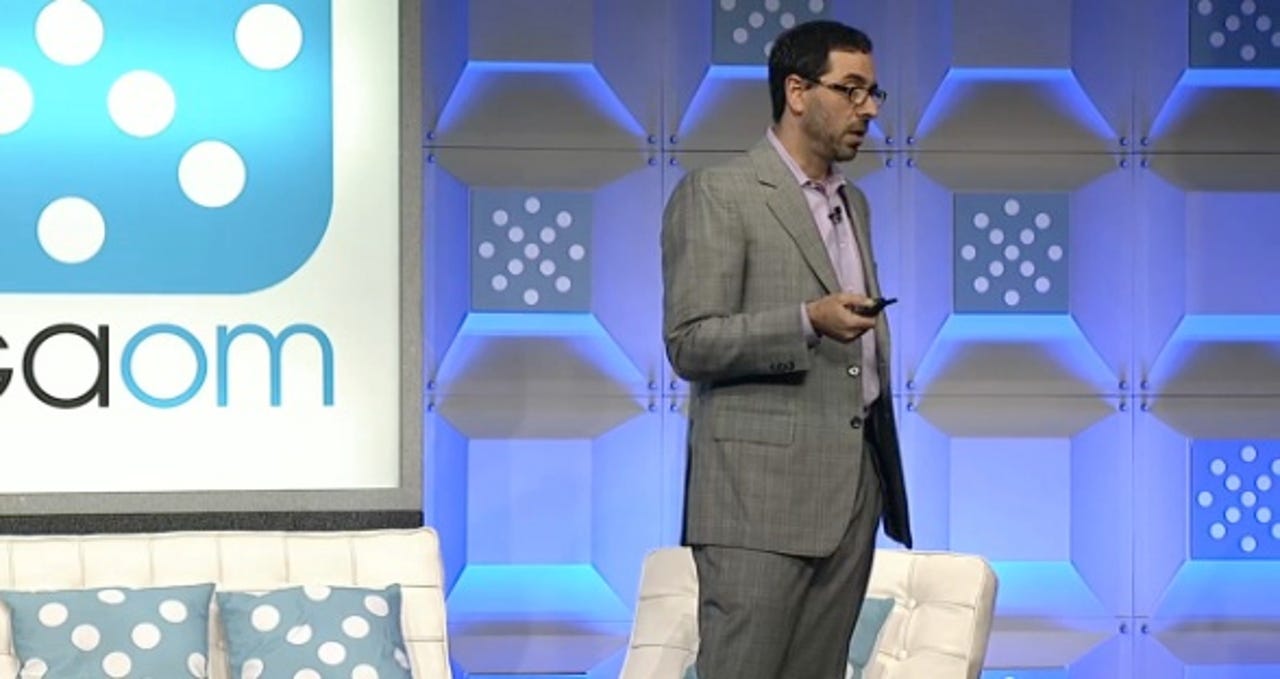AMD exec at Structure 2013: The one-size-fits-all hardware era is over


The datacenter world has hit an inflection point so sharp that it will demand serious changes for the way IT gets done -- starting with the acceptance that the one-size-fits-all server CPU just won't cut it anymore, according to AMD general manager Andrew Feldman.
Speaking at GigaOm's annual Structure summit on Wednesday morning, Feldman outlined a number of these changes coming, including embracing open source technology.
"We need to invent more efficient servers -- not just the CPUs," said Feldman, "For a long time in this industry, we just sat around for a more efficient processor to come out and put that on a motherboard. Those days are over."
But he started off by demonstrating just how much the datacenter touches each consumer without him or her necessarily realizing it on a daily (if not minute-to-minute) basis.
Feldman instructed each person in the audience to turn off their phone. Whether they did so or not, he explained that this cuts them off from the cloud, quipping that their smartphones and tablets were then just glorified "Angry Birds" players.
"That's the point. What you want to do with that device is get to the cloud," said Feldman.
What is even more interesting, Feldman continued, is that these mobile devices "are very good at displaying the work done elsewhere."
He explained that when you look at the client side of the datacenter it is pushing the demand for compute to datacenter, which enables client side devices to do "anything you want."
"On the client side, it is not about CPU performance," Feldman observed, arguing that by looking at the number of tablets scattered throughout the keynote hall, that's proof of this claim.
Feldman posited that the client side is about interaction, graphics and experience. He suggested that this is why Apple promotes design aspects such as the Retina Display over other internal parts because that has the biggest impact on the experience, driving the product forward.
On the server side, this is creating tremendous change as well.
But Feldman pointed out that starts with not only transforming the machines but also the buildings that house them.
Feldman described that we used to put datacenters near urban environments, but now they're in places such as Eastern Washington and rural Oregon to conserve power in these "extremely engineered buildings."
"The vast majority of the work [the datacenter] is doing is simple, paralyzed work that was generated on the client side," Feldman said, explaining this is what Google, Facebook, and eBay do -- they generate work for servers.
He asserted that work both provides and requires a different kind of server, such as HP's Moonshot or Dell's Viking technologies.
Feldman reiterated that requires a whole number of new machines -- but not the same old architecture.
"We need to invent more efficient servers -- not just the CPUs," said Feldman, "For a long time in this industry, we just sat around for a more efficient processor to come out and put that on a motherboard. Those days are over."
"We know how we're going to get to the rest of the world. We're going to get to them on their phone," Feldman predicted, "But we know the phone doesn't have a ton of compute on it."
Nevertheless, Feldman still noted this requires a new, more efficient processor as we start to match workloads to processor types.
At AMD, Feldman said that the chip maker believes this calls for a single-socket processor. In the future, AMD believes it's going to be an ARM processor.
The growing demand on the datacenter isn't going to stop, with Feldman citing that a third of the global population is already connected to the Internet.
As for the other two thirds?
"We know how we're going to get to the rest of the world. We're going to get to them on their phone," Feldman predicted, "But we know the phone doesn't have a ton of compute on it."
The bottom line, according to Feldman, is that the content will be delivered to the phone wirelessly -- but the work will be done in the datacenter.
Screenshots via GigaOm Structure (Livestream)